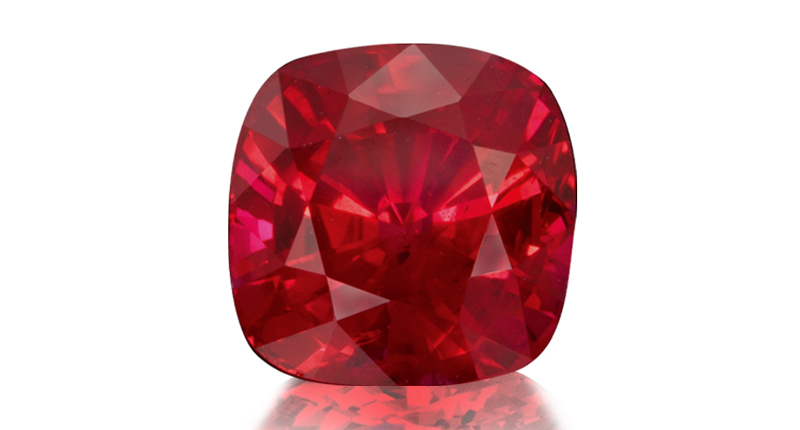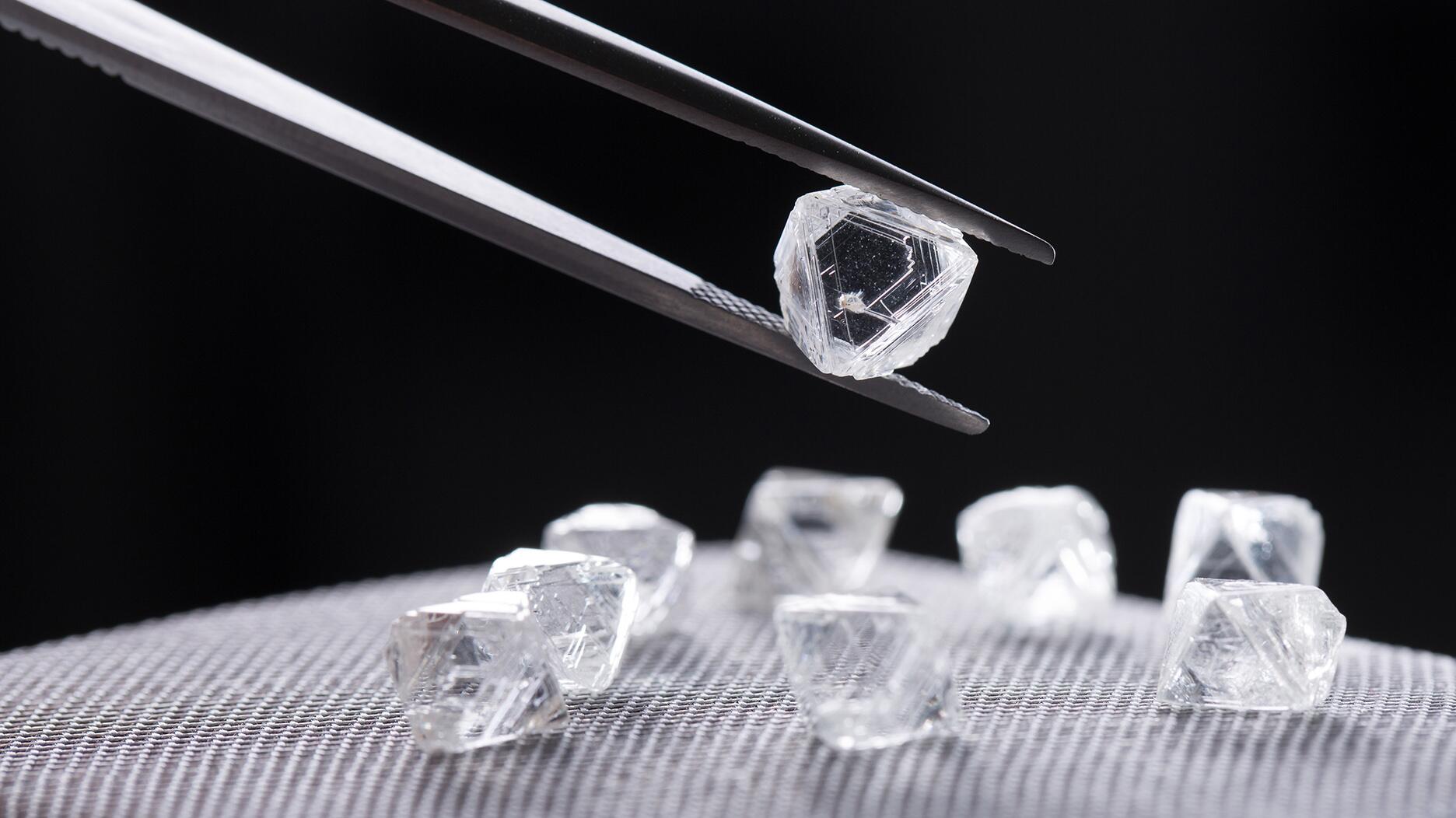Sparkle with festive diamond jewelry as we celebrate the beginning of 2026.
Live from Tucson: 9 Gemstone Market Updates
Richard Drucker tackled trends, memo and grading reports for colored gemstones in a seminar at AGTA GemFair.

Tucson, Ariz.--There’s no better time or place to talk about what’s happening in the gemstone market than in Tucson when the city’s playing host to the annual gem shows.
On Thursday morning, GemWorld International’s Richard Drucker spoke at the AGTA GemFair, summarizing his conversations with gemstone dealers throughout the year regarding supply, demand and pricing trends, and some of the biggest issues facing the market right now.
Here are some highlights from his seminar.
1. More business closings. One of the major stories of 2016 concerned the growing number of businesses in the industry that shut down. The Jewelers Board of Trade’s recently released full-year numbers showed that 1,669 jewelry businesses ceased operations during the year, which is a 50 percent jump from the prior year.
Struggles with garnering enough business to stay afloat and retirement without successors both continue to plague the industry, Drucker said.
However, this also means that with less competition, there’s the possibility of a better business outlook for gemstone dealers and retailers still in the game, he added.
2. Over-reliance on memo. The memorandum issue is one that’s long has been discussed in terms of the designer-retailer relationship, but it’s become a concern in the gemstone world as well, with retailers asking for gemstones on memo.
In the case of the gemstone dealer, who has “taken all the risk” in buying the rough or polished stones and added them to their inventory, Drucker said, he or she is now selling direct to consumers more often so that money isn’t tied up in memo goods.
“Dealers, at some point, are forced to find an alternative on their own,” he said.
3. Last year was slow to start but finished strong. Many of the gemstone dealers with which GemWorld spoke said that last year was fairly weak until after the election when buyers were happy to start buying again, leading to a very strong November-December period.
Dealers also said that where the past three to four years had been fairly slow, it seemed like the gem market finally was seeing some growth again amid a resurgence in interest in color.
4. The two-tier market continues. Repeating a trend Drucker mentioned at last year’s Tucson show--and which many in the trade have echoed since then--both the high end and the lower end are doing well while the middle tier continues to be squeezed.
To
5. The continued popularity of blue gemstones and colored bridal. For anyone who was wondering, the high demand for blue gemstones won’t be going away any time soon.
While blue sapphires seem to be the king, the trend is carrying through to gems of all types: tanzanite, zircon, aquamarine and tourmaline.
And the mention of color in bridal came as no surprise, as that trend has been strong for a couple of years now. But, Drucker pointed out at the seminar that many of the rings and stones that companies have been selling for the category also could simply be fashion jewelry as well, which means that leveraging this trend could just require a rebranding from some.
6. The increasing popularity of unheated gems, better cuts, big and bold gems, and responsibly sourced stones. Stones with natural and rare beauty are doing well, and quality cutting is coming to the forefront.
Meanwhile, responsible sourcing is “becoming a big topic, and you will hear more about it,” Drucker said.
According to a recent Nielsen survey, 12 percent of baby boomers and 26 percent of Generation Xers care about it while more than half of millennials are concerned with ethical sourcing.
Earlier this week, the Jewelry Industry Summit was held in Tucson, and the AGTA also announced that a number of industry organizations--including the International Colored Gemstone Association and India’s Gem & Jewellery Export Promotion Council, among a few others--were stepping in to help with its silicosis abatement project.
7. The “big three” actually are the No. 1, No. 2 and No. 3 sellers for many dealers these days. Sapphires and fancy colored sapphires are on fire, and rubies are benefitting from the increased supply and acceptance of the material from Mozambique. Emeralds are once again seeing a resurgence as price and supply remains stable and the green stone benefits from increased promotion from Gemfields.
When it comes to sapphire supply and price, some dealers said they were seeing strong supply and lower prices, while some said there were shortages and higher prices. What that issue boils down to is quality: When it came to fine stones, prices were going up.
Production of rubies, meanwhile, used to be around 20 percent of that of sapphires but that gap is rapidly closing, Drucker reported. At the same time, there’s “no indication that demand (of average quality or lower) has risen to keep up with the supply.”
As gem dealers have told National Jeweler before, despite the lifting of the ban in Burma, there isn’t likely to be an influx of material into the U.S. market.
When it comes to emeralds, prices are expected to rise, but it’s likely production will too.
In Colombia, Muzo’s output will go up, Drucker said, now that its infrastructure has been established.
He also noted that a new source of emeralds from Ethiopia has been confirmed, though they haven’t yet seen the material and don’t know much about it.
8. Apart from the “big three,” there are a number of other gemstones doing well. According to the gemstone dealers whom GemWorld surveyed, these include spinel, garnet (especially tsavorite), peridot, rhodolite garnet, and rare and different gems.
“How are you going to set yourself apart if you don’t sell something different?” Drucker asked.
9. Colored stone lab reports concern some dealers. Drucker said that every top dealer he spoke with, except one, expressed dislike and concern about lab reports but noted that they felt like they had to use them.
A few things in particular popped up in this section of the seminar, two of which were nomenclature and origin.
In regards to the first, issues arise for some in the colored stone market when it comes to a lack of consistency and codification in naming standards from lab to lab.
With the latter, the reliance on an identification of place of origin is having a big effect on prices. And as so many new sources pop up, there are risks of inconsistencies.
The Latest

The master jeweler, Olympian, former senator, and Korean War veteran founded the brand Nighthorse Jewelry.

In its annual report, Pinterest noted an increase in searches for brooches, heirloom jewelry, and ‘80s luxury.

How Jewelers of America’s 20 Under 40 are leading to ensure a brighter future for the jewelry industry.

Executive Chairman Richard Baker will take over the role as rumors swirl that a bankruptcy filing is imminent for the troubled retailer.


Mohr had just retired in June after more than two decades as Couture’s retailer liaison.

This year’s good luck charm features the mythical horse Pegasus, and is our first Piece of the Week of the new year.

Roseco’s 704-page catalog showcases new lab-grown diamonds, findings, tools & more—available in print or interactive digital editions.

Articles about crime, engagement rings, and a necklace worn in the World Series generated the most interest among readers.

As part of the leadership transition, Sherry Smith will take on the role of vice president of coaching strategy and development.

The new Bulova x Stetson designs highlight two animals often associated with the American West—the bison and the Texas Longhorn.

Its residency at Yamron Jewelers will run through May 2026.

From influential executives to innovative designers, we pay tribute to the people we said goodbye to this year.

The retailer is expanding into areas with large Indian and South Asian populations.

The Italian brand has opened its first flagship amid the peaks of the Dolomites in Madonna di Campiglio, Italy.

The new curation at the Natural History Museum of Los Angeles County showcases rare gem and mineral specimens in their uncut, natural state.

The couple pleaded guilty to concealing at least $127 million in cash transactions at its precious metals businesses.

Consumers shared concerns about prices, inflation, tariffs, trade, and politics in the survey’s write-in response section.

In February 2026, the auction house will move its headquarters to the former Steinway Hall, a neoclassical landmark on Billionaires’ Row.

The new show will take place Jan. 23-25, 2026.

The former BHP Billiton leader and Gemfields chairman is remembered for his influential leadership throughout his 50-year mining career.

The LVMH-owned brand has partnered with the costume design union to revamp its award for 2026.

The luxury titan inked a deal to acquire an initial minority stake in the jewelry manufacturer with a pathway to full ownership by 2032.

The company’s curation of unsigned vintage and estate jewelry debuted at the Bloomingdale’s in Costa Mesa, California.

In the recent multi-shipment seizure, CBP also found counterfeit Audemars Piguet, Moncler, and Chrome Hearts items.

Helzberg’s Chief Retail Officer Mitch Maggart shared details about its tests of a new store concept rooted in an elevated luxury experience.

Jewelers of America execs and National Jeweler editors discuss tariffs, the sky-high gold price, and the engagement that broke the internet.




























